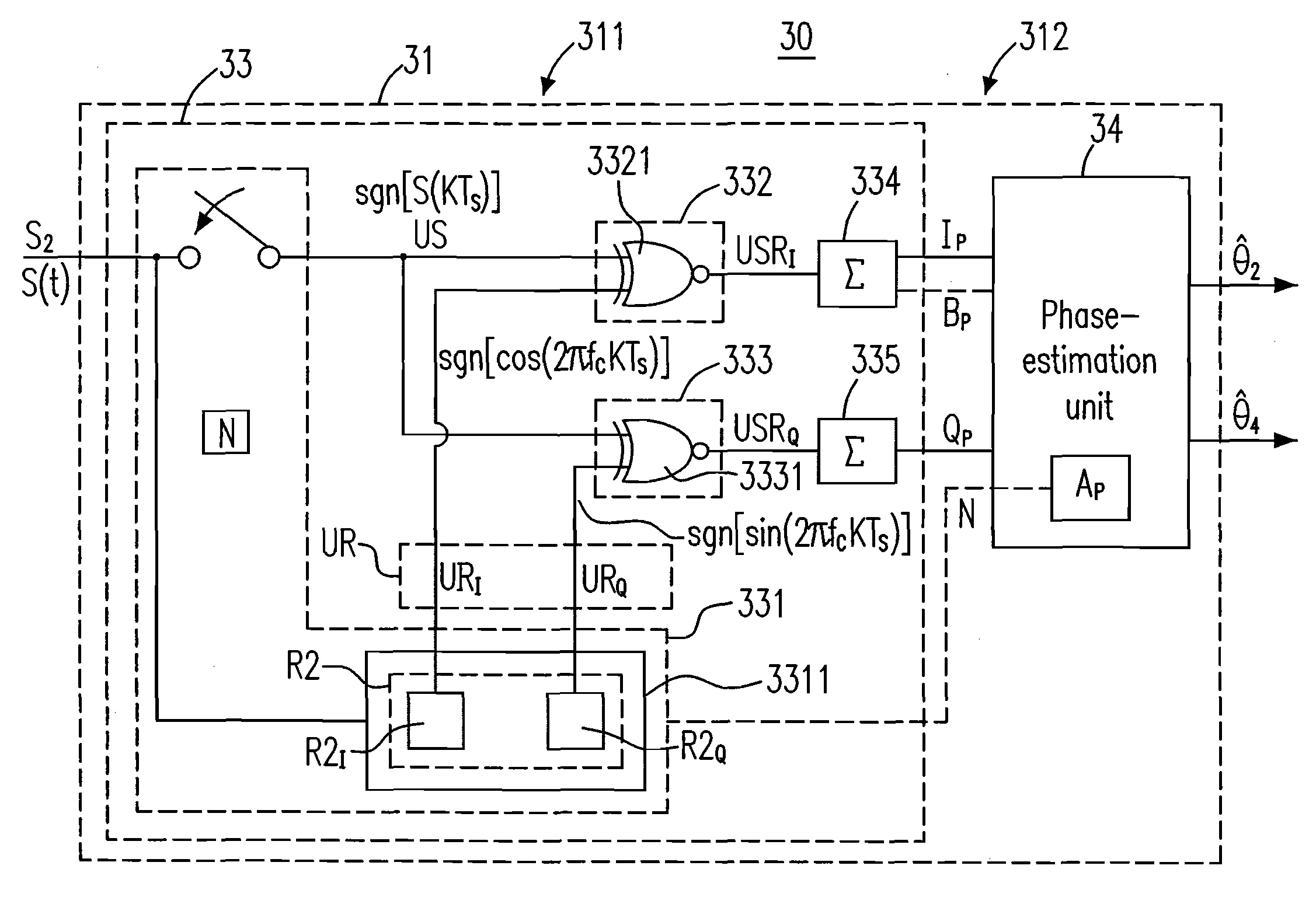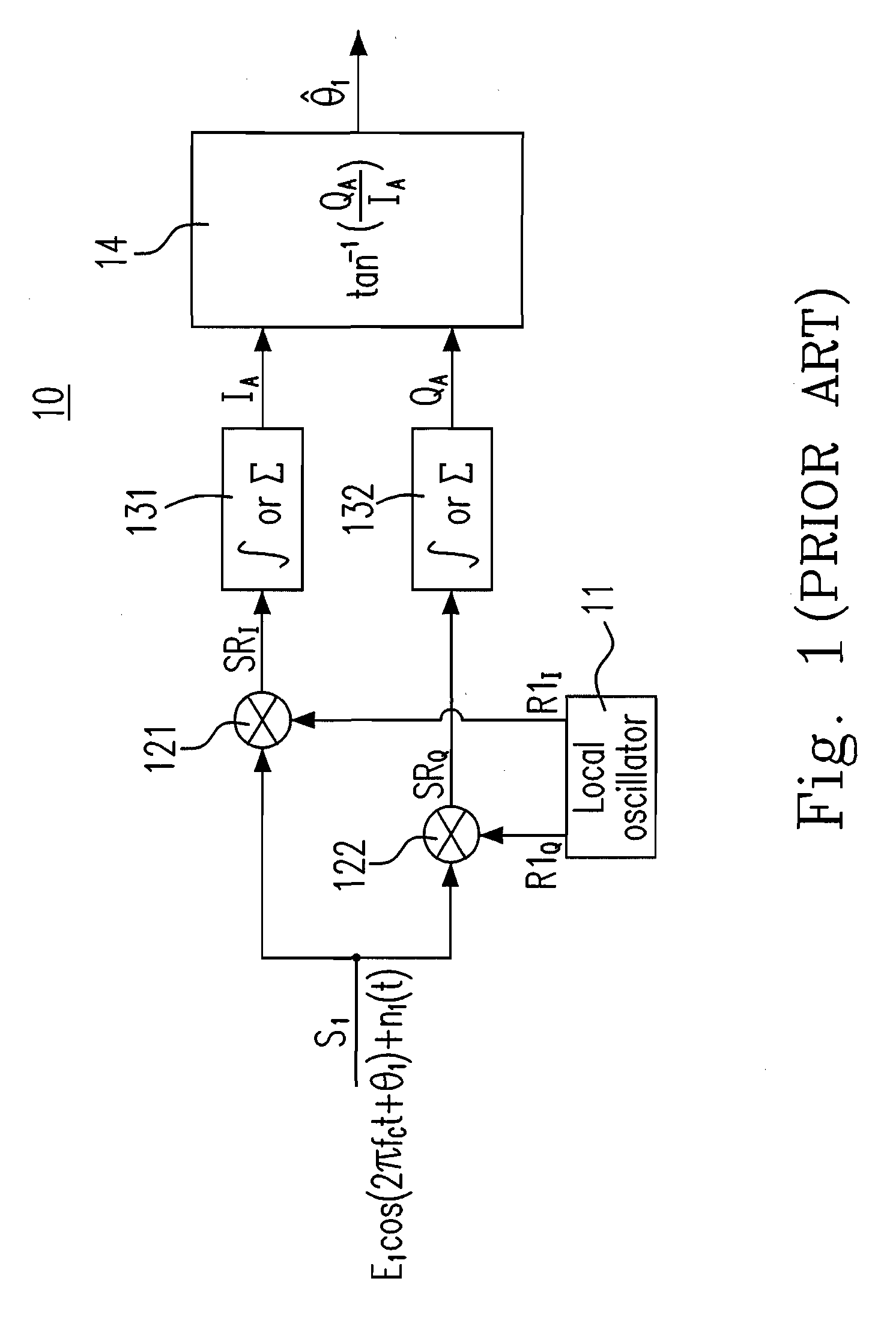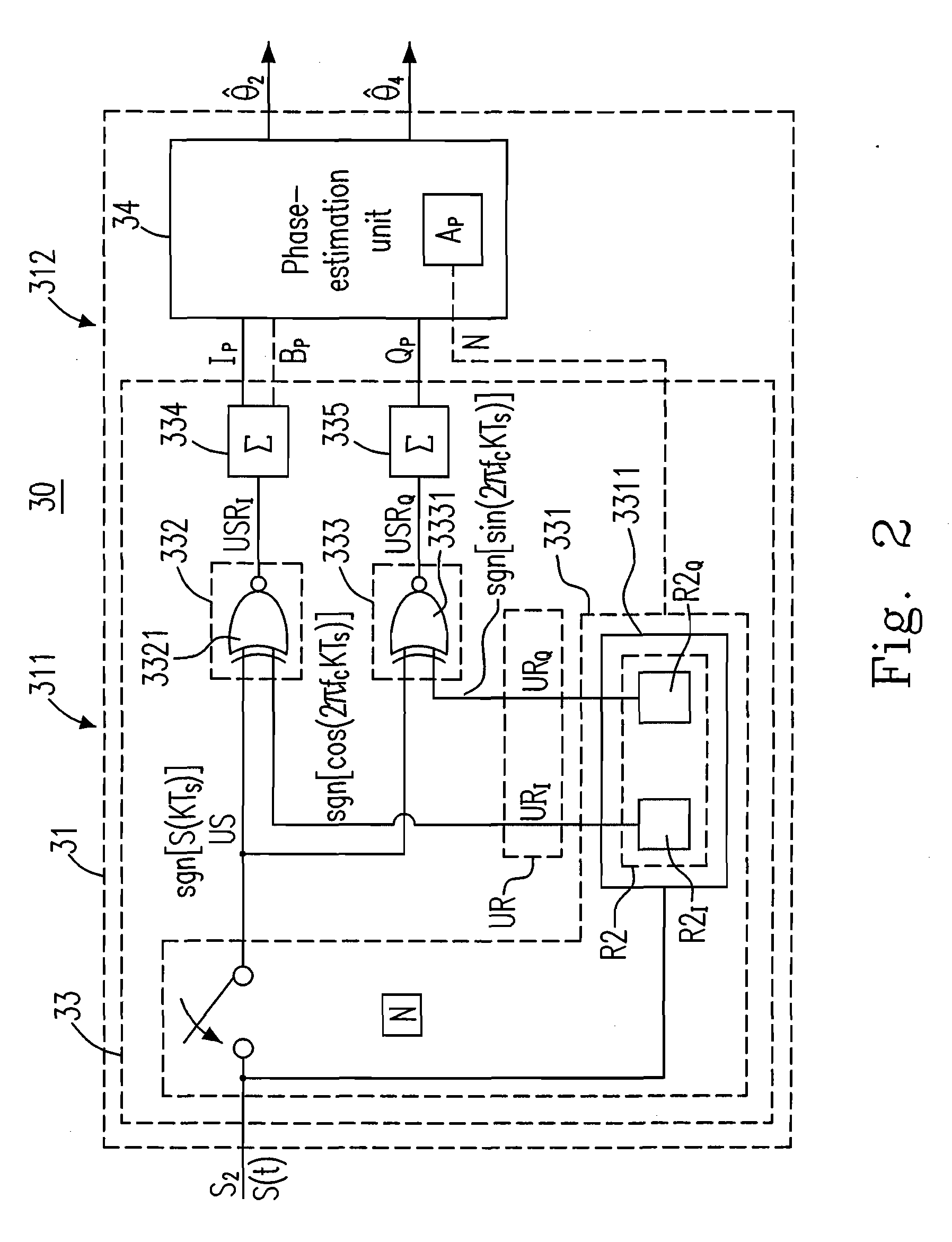Phase-discriminating device and method
a phase-discrimination and device technology, applied in the direction of pulse automatic control, digital transmission, instruments, etc., can solve the problems of additional power consumption and automatic gain control, heavy computation storage, etc., and achieve high accuracy, noise robust property, and high accuracy.
- Summary
- Abstract
- Description
- Claims
- Application Information
AI Technical Summary
Benefits of technology
Problems solved by technology
Method used
Image
Examples
Embodiment Construction
[0020]The present invention will now be described more specifically with reference to the following embodiments. It is to be noted that the following descriptions of preferred embodiments of this invention are presented herein for the purposes of illustration and description only; it is not intended to be exhaustive or to be limited to the precise form disclosed.
[0021]Please refer to FIG. 2, which is a schematic diagram showing a phase-discriminating device 30 of the present invention. As shown, the phase-discriminating device 30 includes a phase-discriminating unit 31. The phase-discriminating unit 31 receives an input signal S2 and produces an estimated phase {circumflex over (θ)}2 (or {circumflex over (θ)}4 in another embodiment) of the input signal S2, wherein the input signal S2 has a carrier frequency fC and a phase θ2. For instance, the input signal S2 may be expressed as the signal S(t)=E2 cos(2 pfCt+θ2)+n2(t), wherein E2 is the signal amplitude, n2(t) is the added Gaussian ...
PUM
 Login to View More
Login to View More Abstract
Description
Claims
Application Information
 Login to View More
Login to View More - R&D
- Intellectual Property
- Life Sciences
- Materials
- Tech Scout
- Unparalleled Data Quality
- Higher Quality Content
- 60% Fewer Hallucinations
Browse by: Latest US Patents, China's latest patents, Technical Efficacy Thesaurus, Application Domain, Technology Topic, Popular Technical Reports.
© 2025 PatSnap. All rights reserved.Legal|Privacy policy|Modern Slavery Act Transparency Statement|Sitemap|About US| Contact US: help@patsnap.com



